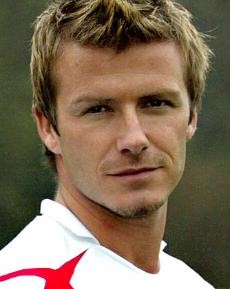Next fall Pima County will face a bond vote deciding the fate of Rillito Park Race Track, the dilapidated horseracing facility five miles north of the Arizona campus. The track is home to seasonal horse racing, the UA’s annual Spring Fling and the surrounding park is open to public activities.
The proposed measure would call for the dismantling of the racetrack and, in its place, construction of 18 soccer and other sports fields (also likely provide cleaner and safer facilities for Spring Fling).
The issue is pretty black and white: Build a facility for kids geared around one of the most team-oriented sports or maintain a decrepit horseracing facility, a refuge for gambling and borderline animal cruelty.
Opponents to the bond claim there are enough soccer fields already in place, and that the racetrack, built in 1943, is a historic landmark. Other arguments against the proposal declare that horses are a symbol of the West (despite the fact that the track features Arabian horse racing), and that the soccer fields would cater to illegal immigrants.
In reality, Pima County needs to take the measure one step further. Don’t just build sports fields; think bigger. Build a sports complex, similar to that of Home Depot Center in Carson City, Calif., geared at bringing a major professional soccer team to town.
Outside the UA, the sports scene in Tucson is suffering. Aside from the quick flurry of spring training, the past year has seen the disintegration of the Arizona Heat softball team and the announcement of the Tucson Sidewinders’ likely departure to Reno, Nev. Yet, despite being one of Southern Arizona’s most popular sports, competitive soccer only exists in the form of the UA women’s team and as a club sport for men.
The city is practically begging for a professional soccer team. It’s impossible to drive around town on a weekend – especially during cooler seasons of the year – and not see kids taking to the pitch or friends getting together for a pick-up game.
The archetype is there as well: Columbus, Ohio, a college town similar to Tucson in size, is home to Major League Soccer’s Columbus Crew and the league’s first soccer-specific stadium. The team has averaged over 16,000 fans per game, becoming a success story for the league and spurring new soccer-specific stadiums all over the country.
As much as sports commentators love to bash on soccer, the sport is growing in the U.S. Over the past 12 years, two professional leagues have sprung up, each with a solid infrastructure and loyal following. Not only does this highlight the increasing demand for soccer, but it also echoes of the development of the NBA, NFL and MLB, all of which were molded from competing leagues.
Building a sports complex geared around soccer would be a potential cash cow for the county. It would bring business into the area and, incorporating it with improvements to the Rillito River Park, would raise property values.
The facility would also provide the UA with a better home for events like Spring Fling and could become a venue for UA women’s and – perhaps in the future – men’s soccer. Moving athletic venues off campus would also free up valuable space for new buildings focused on research and education on campus.
Being the international hub that it is, what bigger draw outside of academics could the UA show-off to students applying from overseas than having a professional soccer team in town?
Judging by its global success and continued growth on the domestic front, soccer is here to stay. It’s hard not to walk across campus without spotting a student wearing the jersey of his or her favorite team. With the introduction of a certain international superstar to the American sports scene (hint: starts with a ‘B’ and ends with “”eckham””), soccer’s continued growth is almost assured.
But the old guard in town are desperately clinging to their horseracing track, claiming it could bring in cash, despite the fact revenue from Rillito Downs hasn’t yet been able to offset operating costs. When that reasoning falls flat, arguments range from the absurd claim that the 64-year-old venue is an historic landmark to xenophobic scare tactics.
Soccer is one of the most involved team sports. Pull one person from a team of 11, and the game is essentially over. It teaches values like cooperation, awareness and unity, which are sadly missing from the sporting landscape in the U.S.
Soccer also allows virtually anyone to play. History has shown it doesn’t take towering athletes to dominate on the pitch. Take a look at the greatest play in soccer history, when a pudgy Diego Maradona weaved through the entire England national team en route to scoring during the quarterfinals of the 1986 World Cup.
Kids look up to sports stars as heroes and role models. At a time when baseball is collapsing under steroid scandals and the NFL’s seemingly endless string of criminal behavior has been highlighted by an alleged interstate dog-fighting ring, do we really want to facilitate horse racing – a notoriously corrupt sport where drug-induced animals run in circles around a track, prodded by whips?
The market is clearly there, so maybe it’s time for Pima County to get some balls (pun intended) and look into upgrading the proposed soccer center into a sports complex aimed at bringing a professional soccer team to town. Not only would it help put Tucson on the map – it could also give a city, divided over so many issues, something to unite it.
Andrew Austin is a media arts senior. He can be reached at sports@wildcat.arizona.edu









